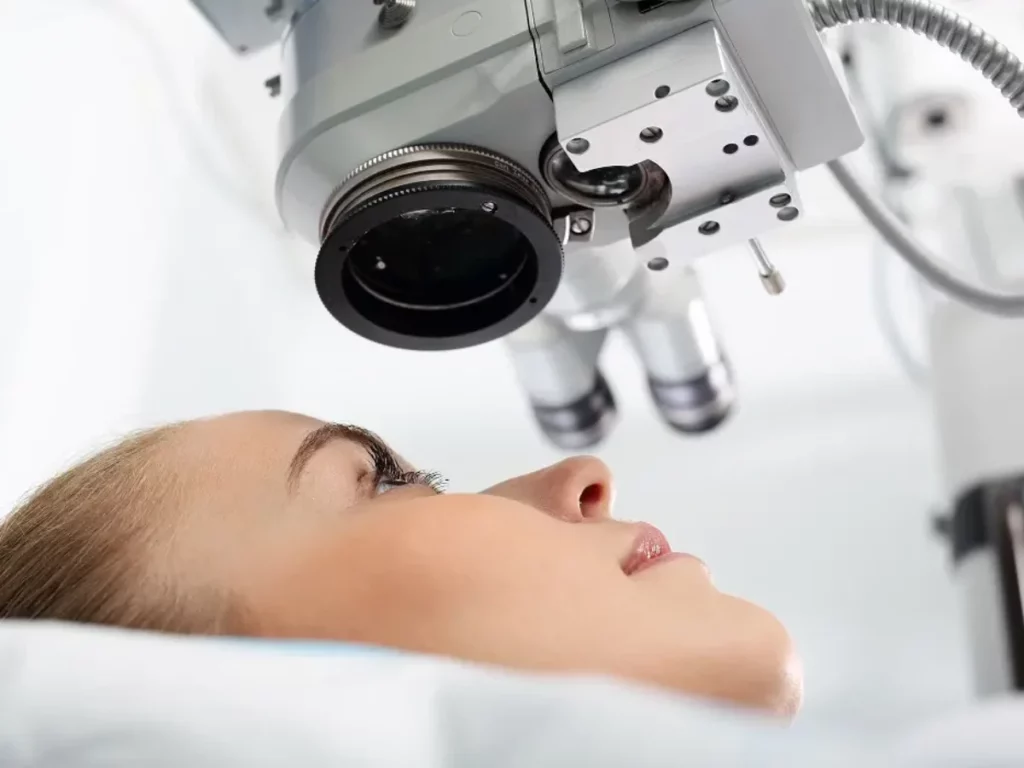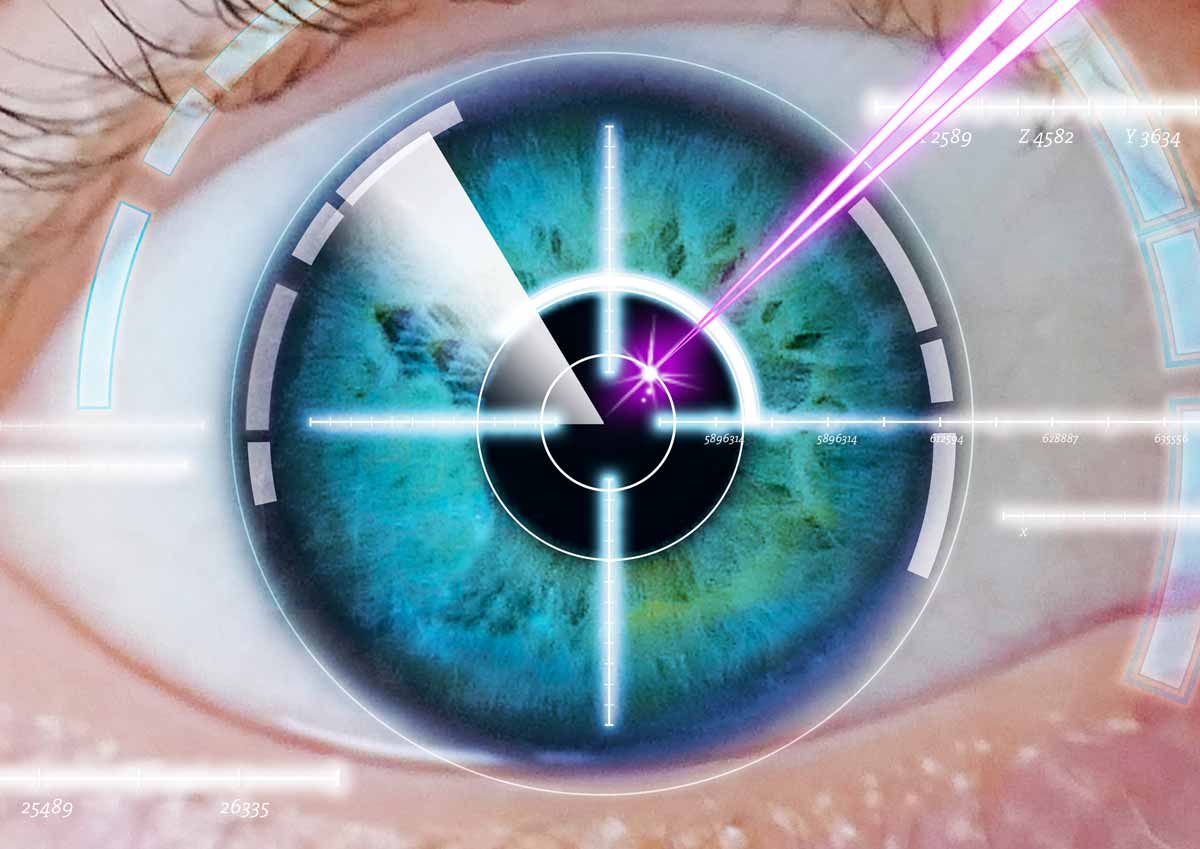SMILE Laser Eye Surgery: The New Era of Vision Correction
In recent years, advancements in medical technology have revolutionized the way we approach vision correction. One of the most significant developments is SMILE laser eye surgery, a minimally invasive procedure that has gained popularity among those seeking to improve their eyesight. This article delves into the essentials of SMILE laser eye surgery, exploring its techniques, advantages, and the journey toward clearer vision.
Understanding SMILE Laser Eye Surgery
SMILE, which stands for Small Incision Lenticule Extraction, represents a breakthrough in refractive eye surgery. It is designed to treat myopia (nearsightedness) and astigmatism while offering several benefits compared to traditional methods such as LASIK. But what exactly happens during a SMILE procedure?
The process begins with the use of a femtosecond smile laser surgery, which creates a lenticule (a small, disc-shaped piece of tissue) within the cornea while leaving the surrounding corneal layers intact. This minimally invasive approach means that only a small incision—typically around 2-4 millimeters—is needed to remove the lenticule, allowing for a relatively quick recovery period compared to older surgical techniques. Patients often appreciate this aspect, as it allows them to resume their normal activities with minimal downtime.
During the surgery, a surgeon will guide the femtosecond laser to carefully create the lenticule before extracting it through the small incision. This precision allows for accurate corrections of refractive errors. Overall, the procedure lasts roughly 30 minutes for both eyes and usually does not require the use of pain medication, as patients often report minimal discomfort during recovery. Many individuals experience improved vision almost immediately after the procedure, with some achieving 20/20 vision within a day or two, which can be a life-changing experience for those who have relied on glasses or contact lenses for years.

The Science Behind SMILE
SMILE surgery represents a significant advancement in understanding the cornea’s structure and function. Unlike traditional LASIK, which involves reshaping the cornea by creating a flap, SMILE works by only targeting the internal layers of the cornea where refractive errors occur.
This capability stems from the intricacy of the femtosecond laser technology, which operates at a level of precision that ensures the surrounding tissues remain untouched. By minimizing damage to the cornea, patients experience less inflammation and a lower risk of complications. This is particularly beneficial for athletes or individuals with active lifestyles, as the reduced risk of flap-related issues means they can engage in sports and physical activities without the fear of dislodging a corneal flap, a concern that can arise with LASIK procedures.
Research studies have shown that the outcomes of SMILE are comparable to those of LASIK when it comes to vision clarity and satisfaction. Moreover, this method promotes faster recovery times, allowing patients to return to daily activities sooner. The long-term stability of vision correction with SMILE is also a subject of ongoing research, with many studies suggesting that the results remain consistent over time, providing patients with enduring freedom from corrective eyewear.
Who Is a Candidate for SMILE?
Not everyone is a suitable candidate for SMILE laser eye surgery, and a thorough consultation with an eye care professional is imperative. Typically, candidates include individuals aged 18 and older with stable refractive errors for at least one year. Additionally, those who suffer from conditions such as dry eye syndrome or corneal diseases might need to seek alternative options.
One of the primary benefits of SMILE is the lower risk of complications, making it an appealing choice for many patients. Factors such as corneal thickness, prescription levels, and overall eye health are assessed before determining an individual’s suitability. It’s also important to note that patients with high levels of myopia or astigmatism may still be considered for SMILE, depending on their unique eye anatomy and overall health. learn more about complications on https://pubmed.ncbi.nlm.nih.gov/33153639/
As with any medical procedure, potential candidates should discuss their medical history and lifestyle with their ophthalmologist to ensure that SMILE is the right choice for them. The decision-making process involves collaboration between the patient and their healthcare provider, ensuring that safety and efficacy are prioritized. Additionally, patients may be encouraged to explore the latest advancements in eye care technology, as ongoing innovations continue to enhance the effectiveness and safety of refractive surgeries like SMILE.
Advantages of SMILE Laser Eye Surgery
SMILE laser eye surgery boasts several advantages over traditional vision correction procedures. Understanding these benefits can help individuals make informed decisions about their eye care.
Firstly, one of the standout features of SMILE is its minimally invasive nature. The small incision not only minimizes trauma to the eye but also leads to reduced postoperative discomfort. Many patients report that their recovery is faster, enabling them to return to their daily routines almost immediately.
Additionally, because no corneal flap is created during the procedure, the risk of flap-related complications is eliminated. This factor can be particularly advantageous for athletes and active individuals, as it reduces the likelihood of complications due to physical activity post-surgery.
The Speed of Recovery
Patients often appreciate the quick recovery time associated with SMILE. Many individuals experience an improvement in their vision within a few hours of the procedure. By the following day, most patients can resume normal activities, though they are advised to avoid strenuous exercise for a short period.
Also, thanks to reduced inflammation and irritation, patients are less likely to experience the common side effects associated with traditional LASIK, such as dry eyes or discomfort in the days following surgery. The absence of a corneal flap also means that patients can maintain the integrity of their cornea more effectively, promoting long-term eye health. To read more about discomfort click here.
This rapid recovery is not just a matter of convenience; it also reflects the advanced technology used in SMILE procedures. The laser technology employed is designed to be precise and efficient, which contributes to the overall effectiveness of the surgery. Patients often find that their vision stabilizes quickly, allowing them to enjoy activities like reading, driving, or even watching television without the hindrance of glasses or contacts.

Long-Term Vision Outcomes
Studies indicate that SMILE provides long-lasting results. Most patients report sustained vision improvement years after the surgery. In fact, clinical trials show that a high percentage of patients achieve 20/25 vision or better, making SMILE a formidable contender in the field of refractive surgery.
Moreover, the technique’s precision contributes to fewer cases of over- or under-corrections. This reliability means that patients can have confidence in their vision correction journey, allowing them to enjoy daily activities without the reliance on corrective lenses or glasses.
Furthermore, the long-term success of SMILE is bolstered by ongoing advancements in laser technology and surgical techniques. As research continues to evolve, the potential for even better outcomes increases, making SMILE an appealing option for those considering vision correction. Patients can feel reassured knowing that they are opting for a procedure that not only addresses their immediate vision needs but also supports their eye health for years to come, promoting a lifestyle free from the constraints of visual aids.
Considerations and Risks
While SMILE laser eye surgery offers numerous benefits, it is also important to consider the potential risks and limitations. As with any surgical procedure, there are inherent risks involved. Patients should be aware that the long-term effects of SMILE are still being studied, and while many individuals report excellent outcomes, there can be variability in results based on individual health factors and the specific characteristics of their vision problems.
Some patients may experience temporary side effects such as halos, glare, or fluctuations in vision. Typically, these symptoms diminish as the eyes heal. However, in rare cases, some individuals may experience persistent visual disturbances, which can be distressing. A thorough discussion with an eye care professional can ensure that patients are well-prepared and have realistic expectations for their recovery. It is also beneficial to understand the timeline of healing, as some patients may notice gradual improvements over weeks or even months following the procedure.
It’s also critical for individuals to maintain good eye care habits post-surgery. Regular check-ups, adherence to post-operative instructions, and protecting the eyes from excessive sunlight and blue light are vital components in maintaining the surgery’s success. Moreover, incorporating a diet rich in vitamins A, C, and E, as well as omega-3 fatty acids, can support eye health and potentially enhance recovery. Staying hydrated and avoiding eye strain from prolonged screen time can further contribute to optimal healing.
Finding a Qualified Surgeon
Choosing a qualified and experienced surgeon is essential when considering SMILE eye surgery. Patients should research their options, ask about the surgeon’s experience with the procedure, and request to see before-and-after patient results. It is also advisable to check for board certifications and any affiliations with recognized ophthalmology organizations, which can indicate a commitment to ongoing education and adherence to best practices in eye care.
A reputable surgical center will also conduct comprehensive pre-operative assessments to ensure that each patient is a suitable candidate for the procedure. These assessments often include detailed eye examinations, discussions about medical history, and evaluations of lifestyle factors that could affect recovery. Clear communication with the surgical team regarding any concerns or questions is vital to ensuring peace of mind throughout the process. Patients should feel empowered to ask about the technology used in the procedure, as advancements in laser technology can play a significant role in the precision and effectiveness of the surgery.
Conclusion
SMILE laser eye surgery represents a new era in vision correction, offering a safe, effective, and fast recovery option for those looking to improve their eyesight. With its cutting-edge technology and considerable advantages over traditional methods, it is no wonder that an increasing number of individuals are opting for this innovative approach.
As with any medical decision, it is essential to consult with eye care professionals and weigh the benefits against potential risks. Armed with the right information and support, many patients find that SMILE laser eye surgery is a life-changing step toward clearer vision.
Ultimately, whether one seeks freedom from glasses or simply desires a more comfortable way to see the world, SMILE provides an attainable solution. As technology advances and instructional methods continue to improve, the future of vision correction is brighter than ever.
Other resources: What is SMILE Eye Surgery and How Does It Compare to LASIK


